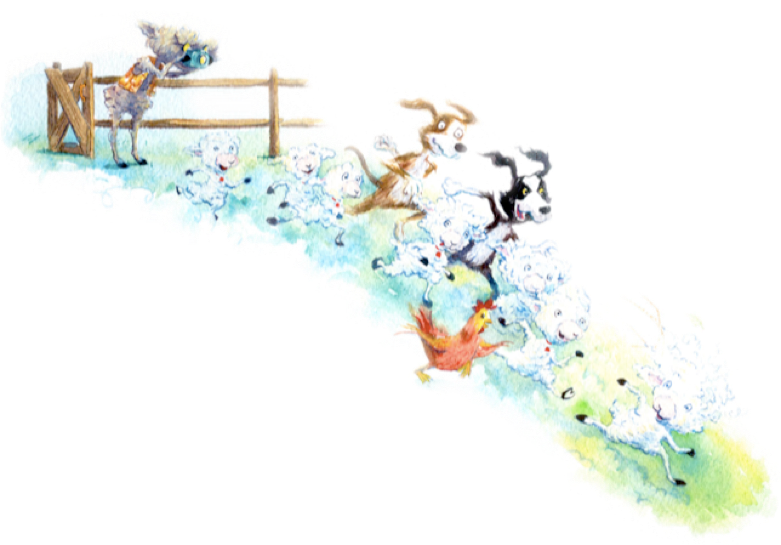SNOW! SNOW! SNOW!
Written and illustrated by Lee Harper
(Simon Schuster, Paula Wiseman Books)
KIRKUS
The morning after a snowfall a dog family heads out to the “best sledding hill in the / whole / wide / world.” Piling onto their sled, they swoosh “down the hill / faster than the speed of sound” before a BIG bump launches them into the air with the geese, sled and all. In his authorial debut, Harper nails the excitement of a swoop down a pristine hill. He depicts his dogs as floppy-eared brown hounds all bundled up in boots, parkas, hats and mittens. The full-bleed paintings place them in a wintry wilderness, surrounded by evergreens. This is a celebration of snow and speed, pure and simple—readers will understand exactly why, after landing with a bone-rattling SPLOOMPH, the kids have only one thing to say: “Again! Again!” (Picture book. 2-5)
School Library Journal
The snow comes down all through the night, creating perfect sledding conditions for the next day. Two pups get bundled up and head outside with their dad, pile onto a sled, and head down the hill. They hit a bump and go soaring into the air, and three spreads show them blissfully sailing alongside the birds. When they are struck with the realization that they can't really fly, they crash to earth, right before the requisite, "Again! Again!" Harper's watercolor illustrations are simple, yet effective. Readers get a good sense of the cold, crisp snow and billowing clouds, and the characters' faces are expressive. Children will enjoy this reminder of how much fun winter can be.—Ieva Bates, Ann Arbor District Library, MI
BOOKLIST
After a night of falling snow, two children (well, OK, dogs dressed in pajamas) look out on a day that’s perfect for sledding. Once dressed for the cold, they climb an enormous hill with their father. All three pile onto the sled and speed downward. Hitting a bump, they take off, flying though the air for a few pages, seemingly soaring above the clouds until, suddenly, gravity kicks in and “SPLOOMPH!” they land, their
fall cushioned by the snow at the bottom of the hill. In the paintings, snowy landscapes and cloudy skies create lovely backdrops, while the expressive, cartoon-like characters bring energy and good-natured fun to the artwork. Short and simple, the text on each double-page spread varies from a dozen words to none at all. Even toddlers will soon chime in on what’s sure to be their favorite line, “Uh-oh,” not to mention echoing the little dogs’ cry after their snowy landing, “Again! Again!”
— Carolyn Phelan


